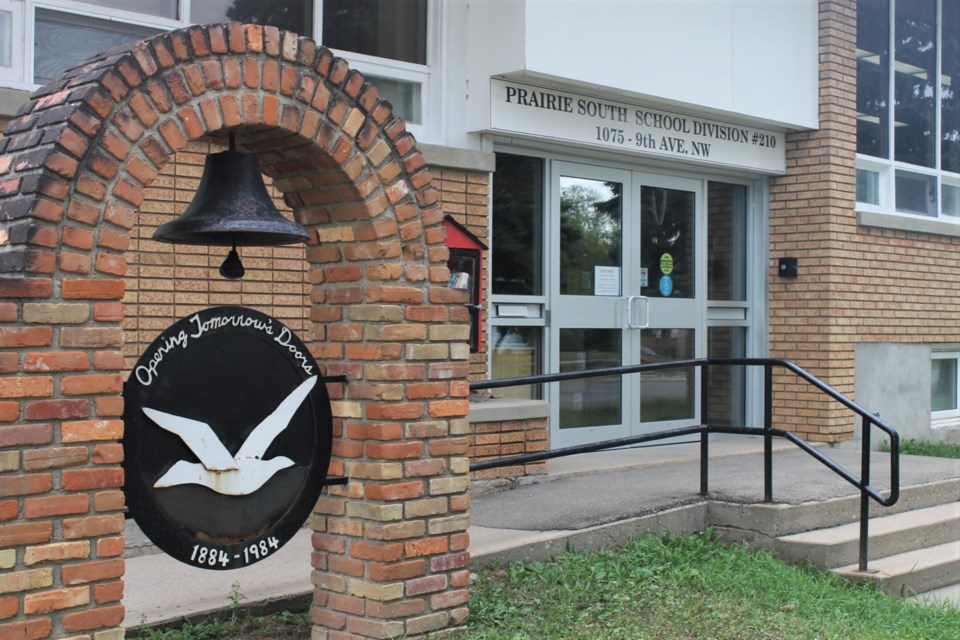The carbon tax increased the cost of natural gas for Prairie South School Division last year, while that expense will rise even further with more increases scheduled for the future.
The federal government introduced the carbon tax on April 1, 2019, and set the rate at $20 per tonne. That rate then increased by $10 per tonne and will reach $50 per tonne by 2022.
The federal government recently announced that it would increase the cost per tonne to $170 per tonne by 2030. This will further raise the cost of gasoline, natural gas home heating and other goods dependent on fossil fuels.
Trustees with Prairie South School Division (PSSD) discussed the potential ramifications of an increase during their December board meeting.
Electricity
Total consumption of electricity and total costs for electricity has decreased during the past five years, explained buildings department manager Darren Baiton.
In 2015-16, the division consumed just under 800,000 kilowatt-hours (kWh), which decreased to roughly 560,000 kWh in 2019-20. Consumption levels spiked briefly in 2017-18 to nearly 1.2 million kWh since the division was upgrading A.E. Peacock Collegiate and power was running 24/7.
Meanwhile, five years ago, electricity costs were just under $1.1 million; were more than $1.15 million in 2017-18; and decreased to roughly $1,025,000 last school year.
From Sept. 1, 2019 to Aug. 31, 2020, Peacock consumed the most electricity per day at more than 2,000 kWh, followed by Central Collegiate at 1,000 kWh.
Natural gas
The division’s total consumption of natural gas has hovered around two million cubic metres per year, with consumption above that mark in 2015-16 and below that mark in 2019-20, Baiton said. The cost of consuming natural gas was roughly $520,000 five years ago but dropped to about $459,000 four years. It has slowly risen since 2017-18 from roughly $480,000 to just under $520,000 last year.
Peacock consumed the most natural gas per day in 2019-20, at 20 gigajoules (GJ), followed by Riverview Collegiate at more than 14 GJ per day.
One positive thing is that, since 2015-16, the buildings department has replaced 80 per cent of the lighting within the division with LED bulbs, said Baiton. PSSD was fortunate this year to receive federal funding from the Climate Action Incentive Fund (CAIF), which was put into the lighting program and “gives us excellent energy payback and costs back to the division.”
Trustee concerns
Prairie South has paid more in natural gas costs since the carbon tax was introduced in 2019, said trustee Lew Young. He was concerned about how that would affect the division, especially when the board of education works to find savings every year.
Baiton said that he was reluctant two years ago to provide the graphs that showed how much PSSD had consumed and paid for natural gas. However, he then realized he needed to provide that data to show trustees that the division was doing everything to save money on energy management.
“But then it was like deflating the balloon when we brought up the next chart (of total costs for natural gas consumption),” he added.
Young hoped that division administration could provide the total amount of money PSSD paid toward the carbon tax. He also wondered if the board would receive a carbon tax rebate.
In response, education director Tony Baldwin said division administration could create a document showing how much has been paid on the carbon tax. It would be easy to find the percentage and apply it against the division’s natural gas, electricity, and fuel costs from last year.
“We have worked that into the budgeting process … ,” he said.
The division won’t receive a direct rebate but will receive carbon tax-related funding through CAIF, Baldwin continued. However, the Ministry of Education might see that extra funding and could remove it from PSSD’s preventative maintenance and renewal (PMR) budget, which goes to upgrading schools.
This means, he added, that the board will have to advocate to keep that PMR money.




